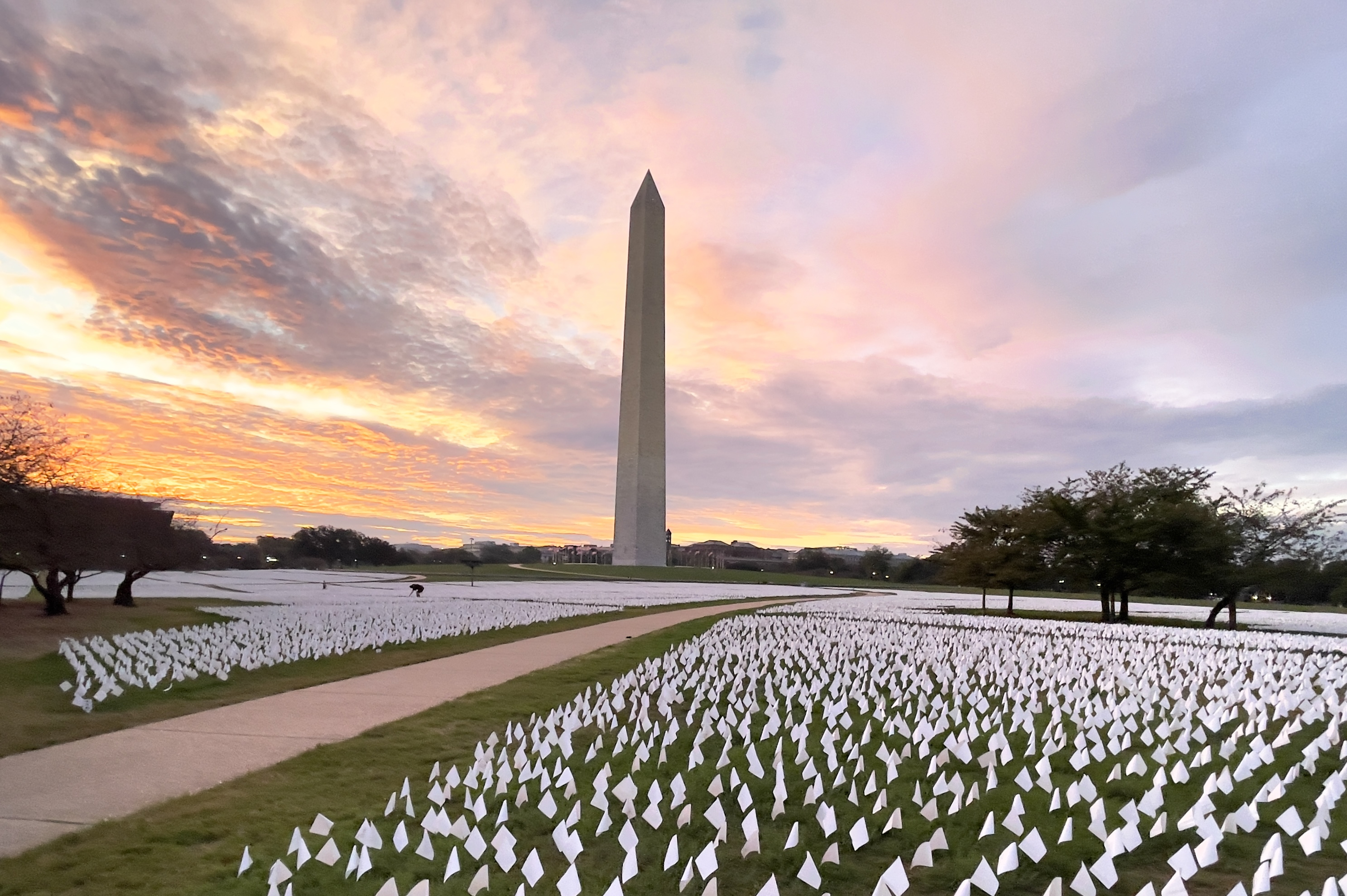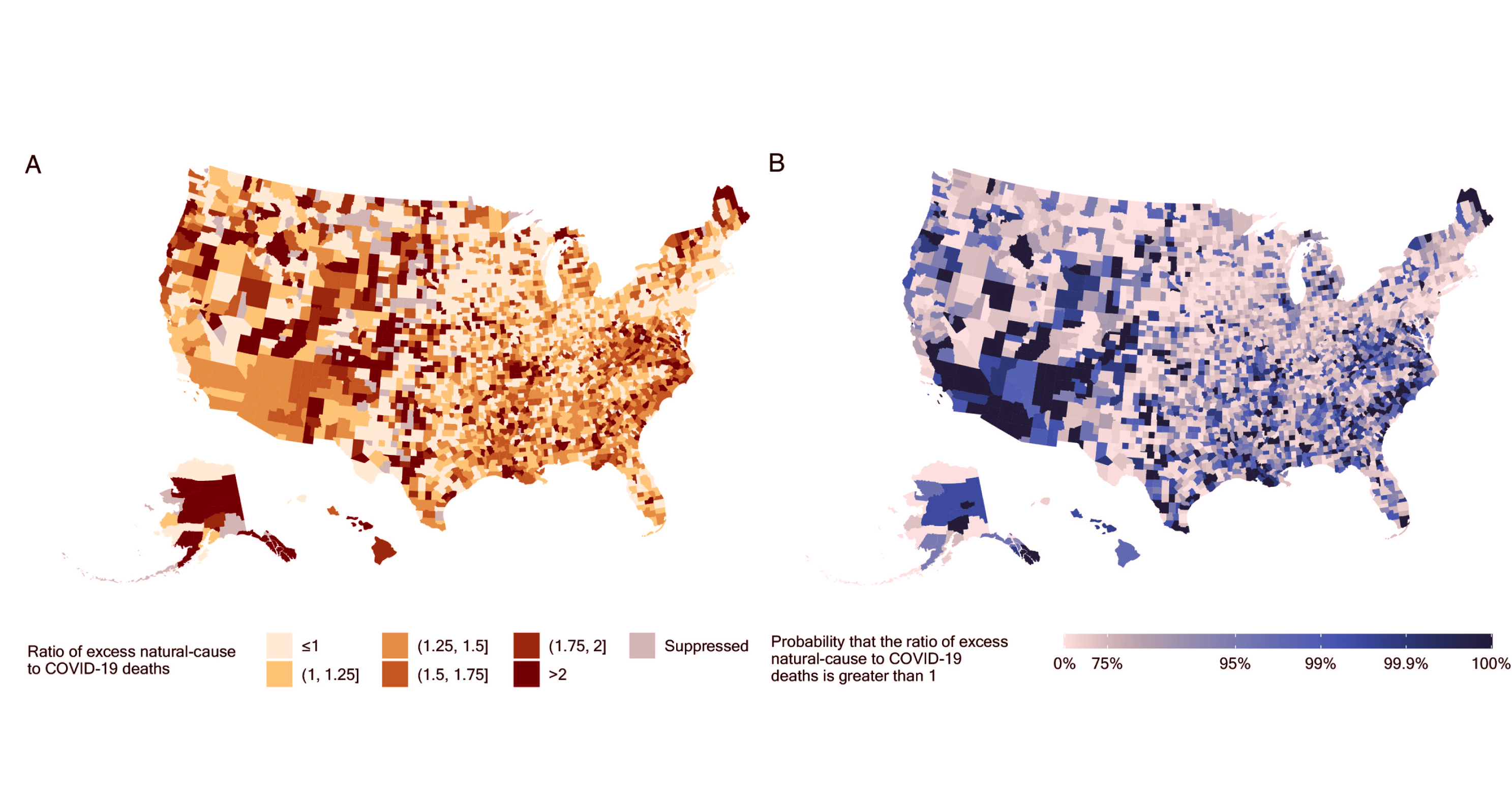
Nearly 1.2 million people have died from COVID-19 in the United States according to official federal counts, but multiple studies of excess mortality suggest that these totals are undercounted. While excess deaths provide an estimation of deaths that likely would not have occurred under normal, non-pandemic conditions, there is scant evidence into whether the SARS-CoV-2 virus contributed to these additional deaths, or whether these deaths were caused by other factors such as health care disruptions or socioeconomic challenges.
Now, a new study led by the University of Pennsylvania and Boston University provides the first concrete data showing that many of these excess deaths were likely uncounted COVID-19 deaths. Published in the Proceedings of the National Academy of Science, the study compared reported COVID-19 deaths to excess deaths due to non-COVID, natural causes, such as cardiovascular diseases and other chronic illnesses, and found that increases in non-COVID excess deaths occurred at the same time or in the month prior to increases in reported COVID-19 deaths in most US counties.
“The study provides compelling evidence that the burden of the COVID-19 pandemic went well beyond what is estimated by COVID-19 deaths alone. It also raises important questions about the variation across the country in the coding of COVID-19 deaths on death certificates,” says Irma Elo, coauthor of the paper and professor in the Department of Sociology in Penn’s School of Arts & Sciences. “The study also points to the overlooked burden that the pandemic had in nonmetropolitan areas where health care resources are often inadequate or lacking.”
The researchers explain that focusing on excess deaths by natural causes rather than all-cause excess death estimates provides a more accurate understanding of the true impact of COVID-19. This is because it eliminates external causes for mortality, such as intentional or unintentional injuries, for which COVID-19 would not be a direct contributing factor.
“Our findings show that many COVID-19 deaths went uncounted during the pandemic,” says study corresponding author Andrew Stokes, a Penn alum, member of Elo’s American Mortality Center, and associate professor of global health at Boston University School of Public Health.
“The temporal correlation between reported COVID-19 deaths and excess deaths classified as non-COVID-19 natural causes offers insight into the causes of these deaths,” Stokes says. “We observed peaks in non-COVID-19 excess deaths in the same or prior month as COVID-19 deaths, a pattern consistent with these being unrecognized COVID-19 deaths that were missed due to low community awareness and a lack of COVID-19 testing.”
Lead author Eugenio Paglino, a Ph.D. candidate in demography and sociology in Penn Arts & Sciences adds that, if the primary explanation for these deaths were health care interruptions and delays in care, the non-COVID excess deaths would likely occur after a peak in reported COVID-19 deaths and subsequent interruptions in care. “However, this pattern was not observed nationally or in any of the geographic subregions we assessed.”
The numbers tell a compelling story
The researchers used novel statistical methods to analyze monthly data on natural-cause deaths and reported COVID-19 deaths for 3,127 counties during the first 30 months of the pandemic, from March 2020 to August 2022. They estimated that 1.2 million excess natural-cause deaths occurred in United States counties during this period and found that roughly 163,000 of these deaths did not have COVID-19 listed on the death certificates.
Analyzing both temporal and geographical patterns of these deaths, the researchers found that the gap between these non-COVID excess deaths and reported COVID-19 deaths was largest in nonmetropolitan counties, the West, and the South, and that the second year of the pandemic saw almost as many non-COVID-19 excess deaths in the as in the first year, contrary to previous research. Meanwhile, metropolitan areas in New England and the mid-Atlantic states were the only areas to report more COVID-19 deaths than non-COVID-19 excess deaths.
“These findings imply that, contrary to our expectations, the U.S. death investigation system failed to capture a sizeable portion of all COVID-19 deaths well after the initial emergency period and into the third year of the pandemic,” Paglino says.
The researchers say that many of these geographical differences in death patterns are likely explained by differences in state policies, coding of COVID-19 deaths on death certificates, or political biases by local officials that influenced COVID-19 policies. In rural areas, for example, COVID-19 testing was more limited, and political biases or stigma around COVID-19 may have affected whether COVID-19 was listed on a death certificate. Conversely, reported COVID-19 deaths may have exceeded non-COVID-19 excess deaths due to successful mitigation policies that encouraged physical distancing and masking and likely lowered cases of other respiratory diseases. Certain protocols in some states, such as in Massachusetts, also enabled death investigators to list COVID-19 as an official cause of death within 60 days of a diagnosis (until March 2022), rather than the 30-day limit in other states.
“Geographic variation in the quality of cause of death reporting not only adversely affected pandemic response in areas where COVID-19 deaths were underreported, but it also reduced the accuracy of our national surveillance data and modeling,” says study coauthor Katherine Hempstead, senior policy adviser at the Robert Wood Johnson Foundation.
Promising solutions to mitigating further loss of life
“Accurate information on how many people in a community die from COVID-19—or any other cause—is essential for making decisions about public health,” says study coauthor Maria Glymour, chair and professor of epidemiology at BUSPH. “It is also important for families. Everyone deserves to know why a loved one died. Resources and commitment to ensure accurate death investigations are essential, and these findings of uncounted COVID-19 deaths indicate those resources are lacking in many communities.”
Members of the team are working on understanding how the pandemic is affecting U.S. death rates, even as the acute pandemic has ended. The researchers hope this new data will encourage future analyses using hospitalizations and other local data to continue to parse uncounted COVID-19 deaths from excess natural-cause deaths as well as deaths due to external causes.
Jillian McKoy of Boston University greatly contributed to this story.
Irma Elo is a Tamsen and Michael Brown Presidential Professor in the Department of Sociology in the School of Arts & Sciences and a research associate at the Population Studies Center and Population Aging Research Center at the University of Pennsylvania.
Eugenio Paglino is a doctoral student in the Department of Sociology in the School of Arts & Sciences and at the Population Studies Center at Penn.
Andrew Stokes is an associate professor in the Department of Global Health at the School of Public Health at Boston University.
Katherine Hempstead is a senior policy advisor at the Robert Wood Johnson Foundation.
Other authors include Samuel H. Preston of Penn Arts & Sciences; Dielle J. Lundberg, Zhenwei Zhou, Rafeya Raquib, and M. Maria Glymour of BU; Joe A. Wasserman of the Research Triangle Institute; Elizabeth Wrigley-Field of the University of Minnesota; and Yea-Hung Chen of the University of California, San Francisco.
The work was supported by The Robert Wood Johnson Foundation (Grant 77521), the National Institute on Aging (R01-AG060115, R01-AG060115-04S1, K00-AG068431), the Eunice Kennedy Shriver National Institute of Child Health and Human Development (P2C-HD041023), the W.K. Kellogg Foundation (P-6007864-2022), the Agency for Healthcare Research and Quality (T32HS013853), and the National Science Foundation (CCF-2200052).








